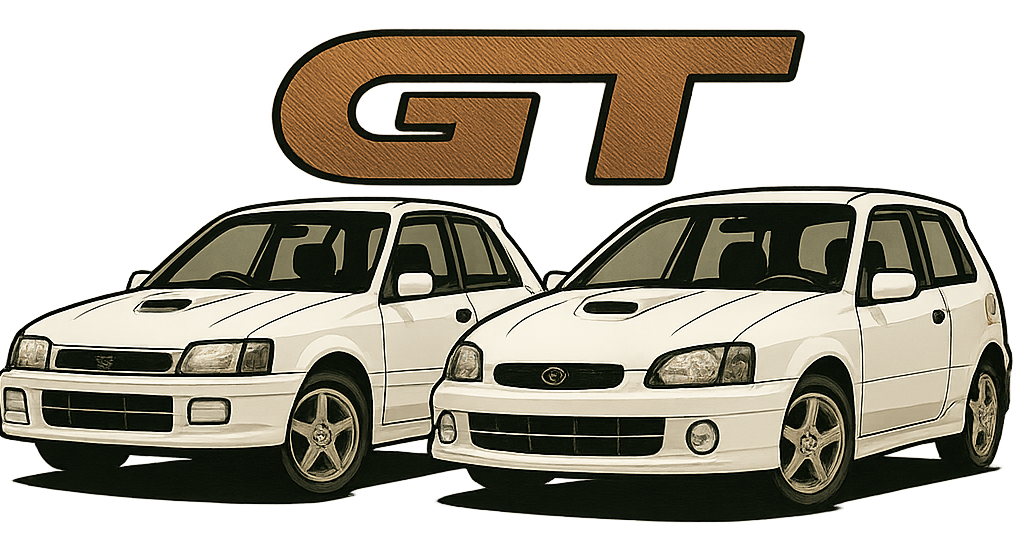Jay
Admin
From the old forum:
And submitted recently by Brendanlez:
Originally posted by Jules-B
How to Paint something yourself Properly
Lots of people either try to paint things themselves and end up with something resembling the moons surface. Or are scared to do it themselves!
So I thought I would write a guide on how to paint things yourself. From interior bits to spoilers and splitters…. using Spray cans…
1.Make sure you buy the following…. Primer, the desired colour, and clear lacquer
2.Ideally only spray-paint in warmish weather. Cold is bad and hot isn’t good either.
3. Ideally slightly heat up the object you wish to spray with a hairdryer…do this within reason though. As we don’t want it hot! Do this because in the long run you will get a better result
4.Make sure the surface you are painting is completely clean of grease and marks, including chips, scratches, left over paint etcetc. If surface is not smooth you can use wet and dry sandpaper to get it smooth. If there are massive craters. The item will need some filler. But that is a different tutorial altogether!
5.Start with the primer. DO NOT hold the can to close to the object as it will run immediately, instead hold maybe 10 cm away and spray using even strokes of the whole object. Do not try to cover the whole item in one go. Usually on the first couple of coats you will still be able to see the original colour. Important to only do one layer and let it dry and then build up etc
6.When you are satisfied with the primer move on to the colour and repeat the steps above. If using a metallic colour. Ie Toyota black. Sometimes I will give a couple of coats in normal gloss/satin black. Or whatever your colour choice is. Not essential but have found the end results to be good. Yet again Thin layers and let dry and build it up
7.When the paint is fully dry. Use the same method for the lacquer. You can use as many coats of this as desired. Again make sure each coat is dry before moving on. Generally speaking the more layers of Lacquer the shinier the object
GOLDEN RULE…PATIENCE! Don’t expect any spraying to take 10 minutes!
Cheers
Jules
And submitted recently by Brendanlez:
Originally posted by Brendanlez
Prep:
sand the bumper down starting with 80 grit sand paper to take the most of it off, then move to 220 and then to 400 to remove any sanding marks. (Make sure to use wet and dry for the 220 and 400 and use it wet) Make sure to get into all areas and corners of the bumper.
Priming:
Mix up the primer to hardner to what it says on whichever brand you are using, i tend to use Max Meyer or Upol. Give it a misting coat first and let it dry. Then give it another coat covering more of an area to what you did the first time. Finally give it a coat to cover the lot. Let the paint cure completely.
Rubbing Down:
Get an aerosol can and give the bumper a misting of paint and let it dry. Using 600 sand paper (wet and dry using it wet) Rub down the bumper to take away the misting of the aerosol can you just used. the aerosol can was just a guide to show you where you did not rub down. Be careful not to rub too much that you will take away the primer.
Painting:
Mix your paint appropriately...
Waterbased - if there is no water already added to thin the paint then add between 15 to 30% and stirr it up (how much water you add is up to how fine of a needle is used on your gun). Paint similar to priming - 1st coat is misting, then cover a little more and finally over the lot. Remember to do your edges first. To dry Waterbased paint a movement of air is needed not heat, you can use the spray gun to move the air around the piece but be careful not to move the paint.
Solvent based paint - Some solvents require hardener some dont its best to check with whoever mixed the paint. If it does require hardener check on the tin/jar how much and stir really well. If it doesnt require hardener just thin it a little approx 10-15% again it depends on how thin the needle of the gun is and spray the same as above. Heat is required to dry this properly tho or a long period of time.
Laquer:
Mix the laquer as described by the manufacturer and thin accordingly using thinners... It takes very little thinners to thin out laquer. Again mist the first coat and do your edges and cover more with the second and finally cover it all, after you cover it all, I suggest you wait a little while letting it slightly cure and give it another coat. Heat is needed to cure this completely.
Final rubbing down:
After the laquer is completey cured, use 2000 grit Wet and dry sandpaper to rub it down make sure its used wet. After some light rubbing dry off your piece and you will see any high spots in the laquer, it will be like white sanding marks on it. Rub it all down until your laquer is flat. Dry and wash the piece and dry it again. Rub some cutting compound into it with a spray of water to get rid of the white sanding marks and finaly T-cut and Polish it.
